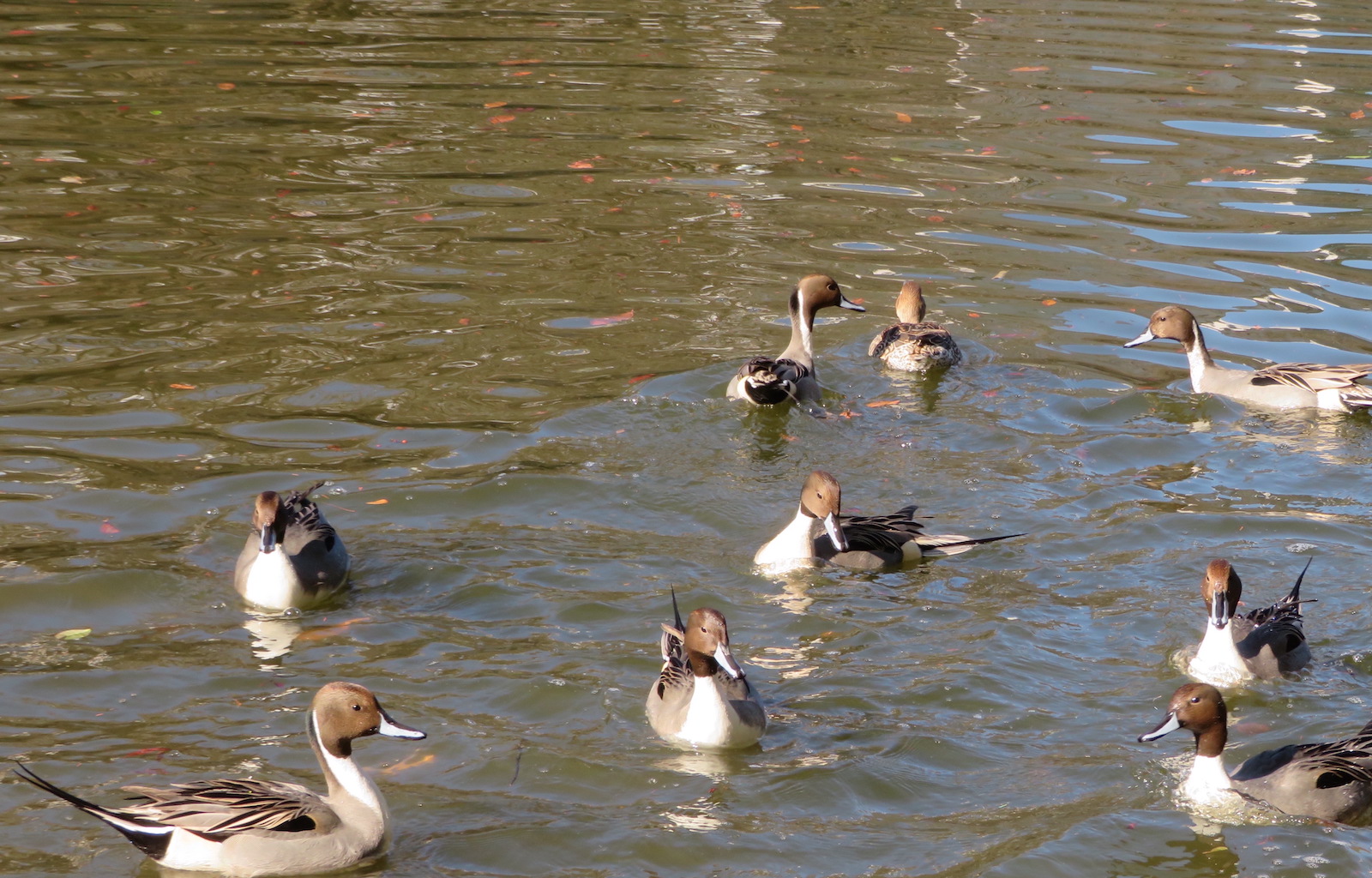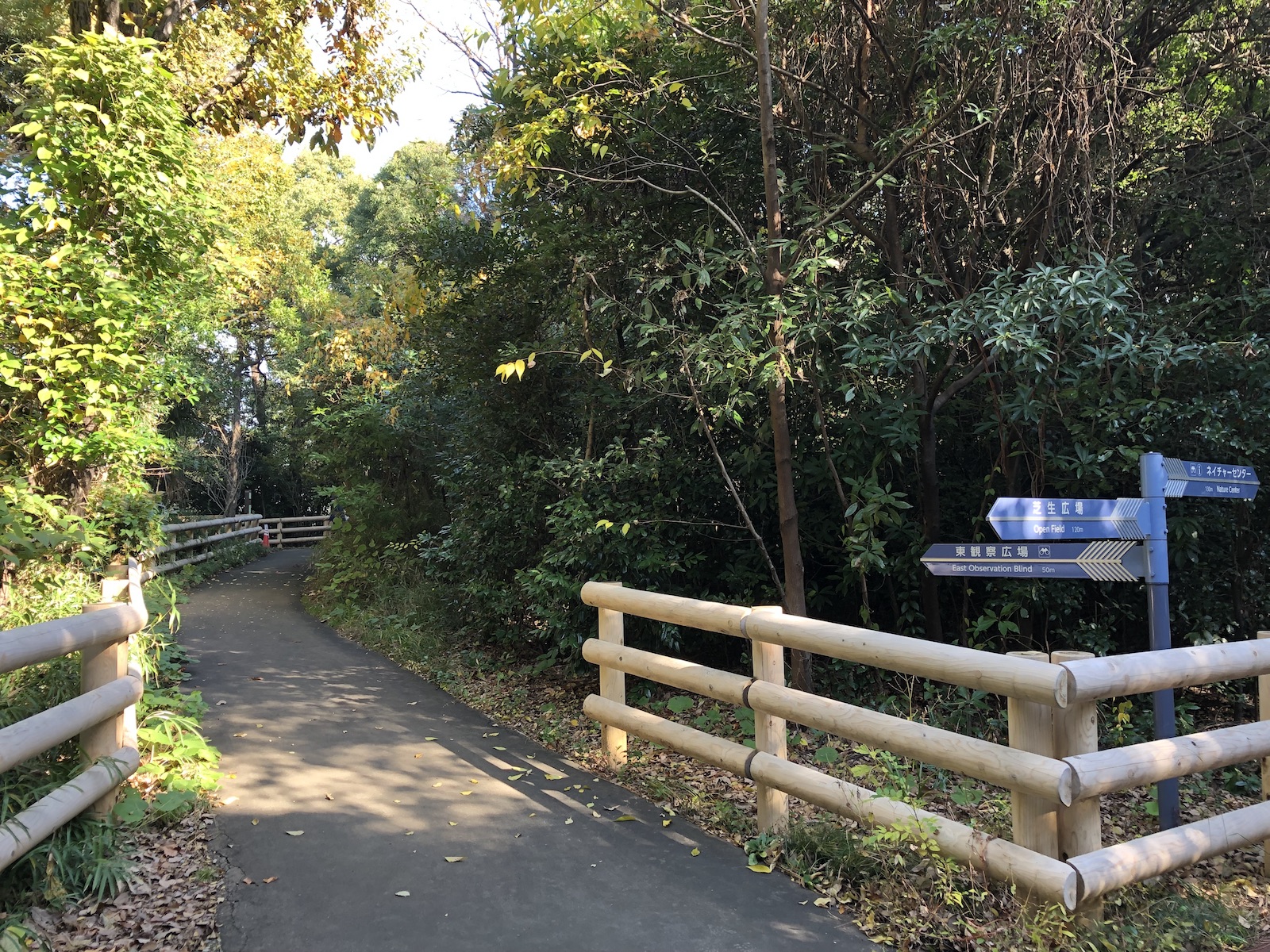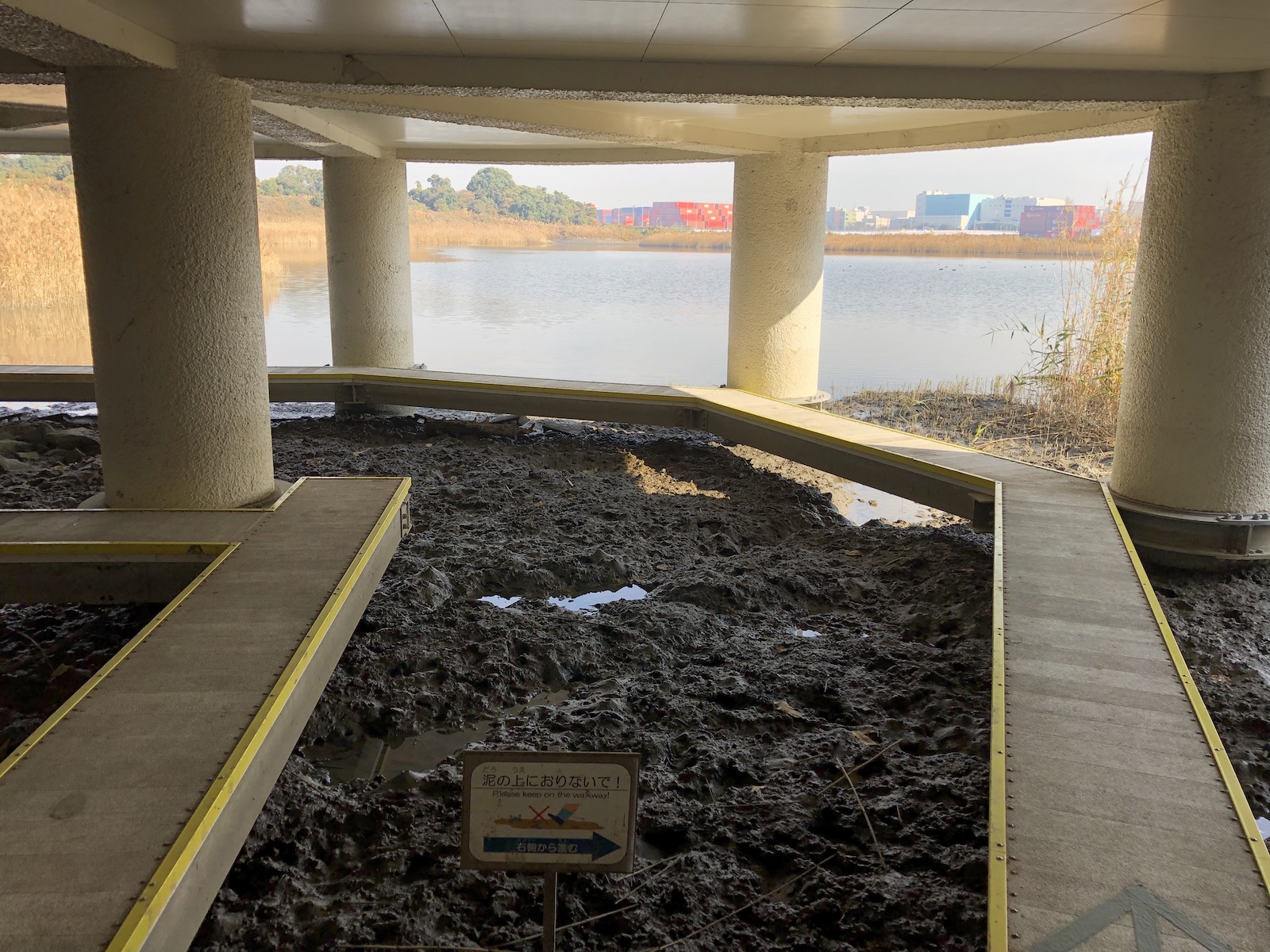The inexorable changes of season and the delights they bring are a particular point of pride in Japan. These changes aren’t always as obvious in urban areas, but the signs are there for those who seek them. As we head into autumn, the changing leaves (koyo in Japanese) may be the most popular sign of the season but another — perhaps more “fun” — chance to celebrate the season can be found at the Tokyo Port Wild Bird Park, where migratory birds are engaged in their seasonal repositioning.
The 24.9-hectare park is located north of Haneda Airport on Jonanjima, an island reclaimed from Tokyo Bay. Water birds that had long rested in the shallow areas of Tokyo Bay during their migrations were first attracted to the area in the 1960s as waterways and marshes developed naturally during the reclamation of Jonanjima. Avid bird watchers soon followed. The resulting park, adjacent to the Tokyo Wholesale Market, opened in 1989 as a green space for wading birds and migratory water birds.
The now well-established habitat is a regular stop for the Lesser Sand Plover (aka Mongolian Plover) as it heads south for the winter or north again in spring to begin its breeding season. Base on this transit pattern, the park is a member of the East Asian-Australasian Flyway Partnership, a multinational organization dedicated to preserving migration routes for more than 250 varieties of migratory waterbirds.
During the peak migration season, visitors to the park can expect to see 30 to 40 varieties of birds in the park on any given day. But even in the non-migratory season, visitors are able to spot some waterbirds, especially cormorants, herons, egrets and a few varieties of duck, as well as turtledoves, brown-eared bulbuls, starlings, tits and crows.

The park contains wooded areas popular with small birds as well as three large ponds frequented by waterbirds. Two of the ponds contain fresh water, while the third is a brackish inlet of tidal water. Wide, well-established trails connect everything and ensure that visitors can see the birds without getting too close.

A large nature center stands at the intersection of the brackish pond and the so-called “East Freshwater Pond”. The nature center has knee-to-ceiling picture windows overlooking the ponds which allow visitors to observe the birds without disturbing them. Photographs are usually arranged at the bottom of the windows to help visitors identify the birds most common in the particular season. There are also displays on the park’s history and that of Tokyo Bay as well as the natural history of some of the birds of the park. There are also exhibits containing environmental messages regarding the damaging effects of water pollution and the importance of protecting waterways and shore areas by keeping them clean.
From the lowest level of the nature center, visitors can step outside and traverse a boardwalk over an area of tidal flat. Depending on the level of the tide, visitors might see rays gently gliding through shallow water or crabs skittering in and out of their holes in the mud. It’s a special treat to see bug-eyed Mudskippers (tobihaze) pulling themselves across the mud using their pectoral fins almost like legs.

Pillbox-like “observation huts” on the tidal inlet and the so-called “East Freshwater Pond” facilitate closer observation of the birds. A large blind allows similar bird-watching at the West Freshwater Pond. Some varieties of birds prefer the East Freshwater Pond, surrounded with grassy wetlands while others find the tidal inlet more appealing. Some birds only show a preference based on where they can find the best food.

The park is also a family-friendly facility with picnic areas near the entrance. Large wooden picnic tables often sport small cast figures of sparrows to add atmosphere. Some families prefer to just spread a blanket on the ground under the trees to enjoy their repast.
Especially on weekends, volunteers at the Ecology Education Center in the western section of the park offer a number of nature-oriented craft activities aimed largely at children. Needless to say, these activities were significantly curtailed during the height of the pandemic and are still not fully operational, although hopefully they will soon return in full force.

The western section of the park also has a kind of “show garden” designed to emulate early Japanese agriculture. There are a couple of small rice paddies (apparently school children are enlisted each year to help with planting and harvesting) and a vegetable patch, bisected by a small stream. A small pond of the type used to raise fish caught too small stands in one corner. Beyond this is the West Freshwater Pond, which differs from its eastern counterpart in that it is surrounded by bushy woodland, making it more attractive to entirely different birds.

This is a park that is sure to delight birdwatchers, who can test their knowledge of waterbirds, wading birds and migratory birds. At the same time, city-dwellers who are, perhaps, not so knowledgeable about birds can visit for a chance to learn about them, or perhaps just to enjoy fresh air and the changing seasons in a natural setting without traveling too far from the city.
Given the park’s proximity to Haneda Airport, even a transiting traveler with a longish (3+ hours) layover may find it easy and refreshing to make a trip to the park. After all, such travelers are just another breed of migratory bird, are they not?
Hours: Tuesday through Sunday, 9:00-17:00 (Feb – Oct); 9:00-16:30 (Nov-Jan)
Admission: Adults - 300 yen (half price for seniors and junior high school students; primary school students and below are free)
Getting there: The Tokyo Port Wild Bird Park is a 15-minute walk from Ryutsu Center Station on the Tokyo Monorail. The entrance, on the north side of the park, has a zig-zag approach with high stone walls similar to those of Japanese castles.
Vicki L Beyer, a regular Japan Today contributor, is a freelance travel writer who also blogs about experiencing Japan. Follow her blog at jigsaw-japan.com.
© Japan Today Take our user survey and make your voice heard.
Take our user survey and make your voice heard.















No Comment
Login to comment